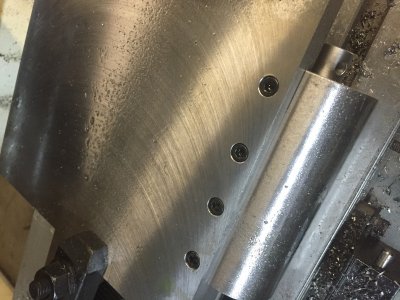- Joined
- Jan 19, 2012
- Messages
- 177
I am building a simple tilting table. I have machined a round with a notch in it and need to attach a flat plate. I am going to use some allen bolts recessed into the flat plate and tapped into the round. I have the plate on the round and clamped to the mill table. Now the question. Do I do one hole at a time, tap drill, clearance drill then countersink? My thinking is to tap drill all four holes use the DRO to go back clearance drill all four then go back with the DRO and countersink them. I think if I do it this way I can hold all the depths consistently without having to change out the tooling for each individual hole.



